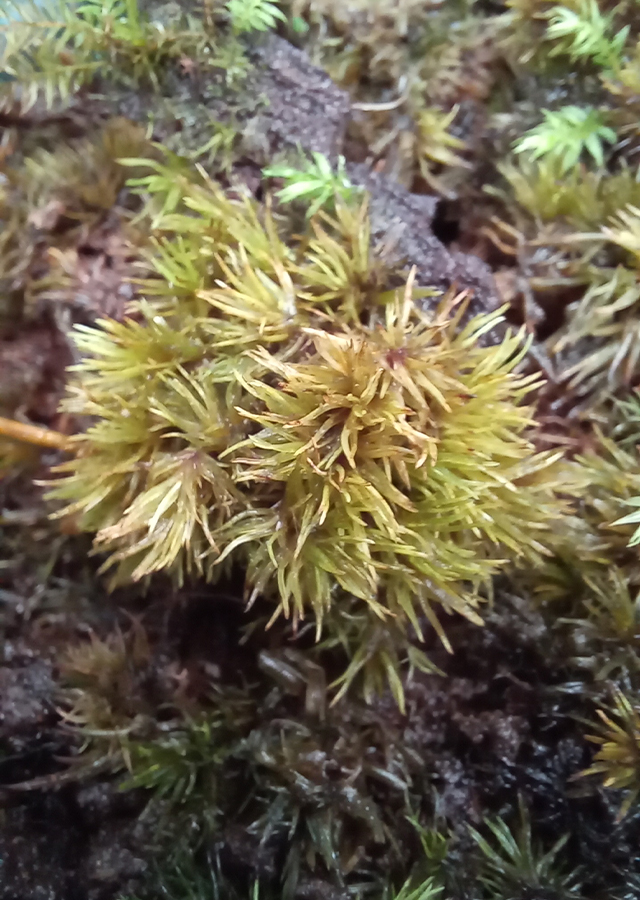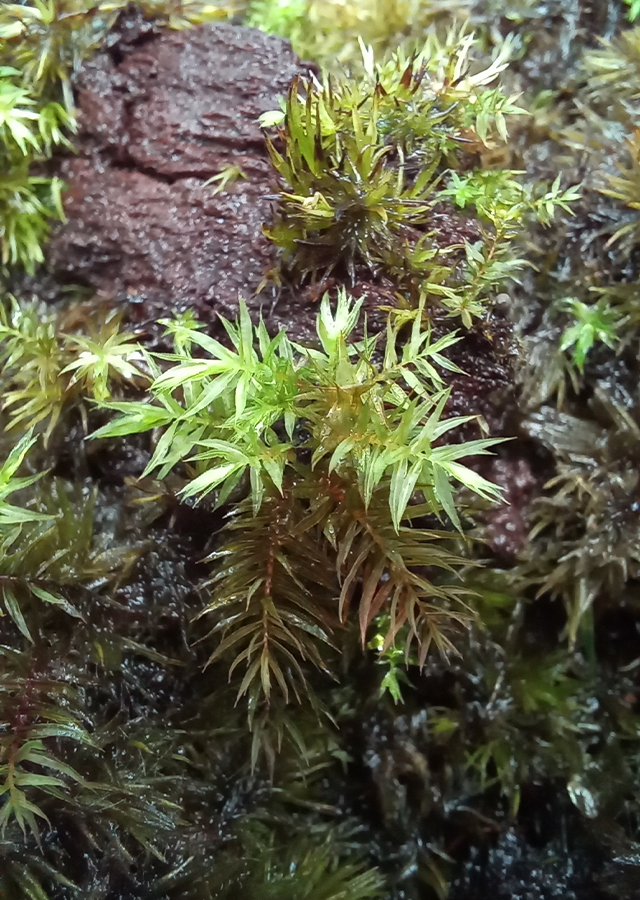Traditional Herbs from Leucobryum glaucum
What is Leucobryum glaucum Looks like??



Parts of Leucobryum glaucum that could be used
- All Parts of the Plant
Leucobryum glaucum Distribution
Leucobryum glaucum is a moss plant from the genus Leucobryum which is widespread in eastern North America and Europe. This species can be used as a bioindicator species for the good and bad of an environment by showing a response to heavy metal ions or pollutants by changing the chlorophyll content and increasing the rate of water defense. This species also has various pharmacological activities, one of which is antimicrobial activity. Apart from that, Leucobryum glaucum is also often used as a decorative plant in terrariums and aquariums.Agroecology of Leucobryum glaucum
The habitat of this moss grows in groups on soil substrates, rotting wood and rock edges. In Illinois, its habitat includes rocky forest lands, shady hillsides, forested cliffs and ridges, weathered pine trunks in sandy savannas, sandstone cliffs and ledges, sandstone walls along streams, burial grounds, lightly shaded ground in parks cities, and clay soils along roadsides, but is most often found in damp forests and swamps because it requires a lot of shade and water. Although this moss usually occurs in high-quality natural areas, it is sometimes seen in disturbed habitats. These mosses like areas with shade to partial shade and moist soil, and will spread around them as long as they have the shade and humidity they need to live. This moss also likes acidic soil containing humus, clay, sand, gravel, or rocky material, and is able to tolerate drier conditions than most mosses. In favorable locations, mosses can live a long time, forming quite large plant cushions.
Morphology of Leucobryum glaucum
- Roots in the form of rhizoids (pseudo roots) are fibrous to anchor them to the underlying substrate.
- Stems 1-12 cm long, pale green (turns brown with age), glaucous (waxy leaf surface), and terete, sometimes -sometimes they have dichotomous branches.
- Leaves alternate (right-left) from the base of the stem to the tip of the stem, grow densely, are shiny light green, lanceolate in shape, edged flat, base blunt and tip pointed, curved upwards along both sides of broad midrib, becoming curved and semi-tubular along outer two-thirds of length, leaf surface smooth overlapping pseudowhorls along stem, ascending and clasping the stem at the base. Dioecious, where the male reproductive organs and female reproductive organs are located on separate plants.\u00a0Male plants often appear above female plants in a stunted form Fertile females produce solitary sporophytes. Each sporophyte consists of a spore-bearing capsule on a slender stalk (seta). The setae of this moss are usually 8-18 mm long, long, reddish, and more or less erect.\u00a0The capsule body has a curved ellipsoid-cylindrical shape, tapering at the base,\u00a0elongated and red to reddish brown when ripe. This capsule body has an eyelid (opercula) measuring 1.5-2 mm, long and has a long beak shape. A fine membrane cap covers the capsule body and calyx, although the cap then breaks and falls to the ground.
Cultivation of Leucobryum glaucum
Propagation is carried out asexually when the dry leaves break off due to disturbance. With moist media conditions, the leaves are able to form fibrous rhizoids and start the development of new clone plants.
Leucobryum glaucum, more details :
Chemical Content of Leucobryum glaucumEssential oils (thujopsadiene, β-curcumene, cedrol, cis-isolongifolene, terpenes/terpenoids, aliphatic hydrocarbons, aldehydes, ketones).
Benefits of Leucobryum glaucum
Has activity as antimicrobial, antibacterial, antitumor, antiseptic.
Simplisia of Leucobryum glaucum
Another Facts for Leucobryum glaucum :
Synonym of Leucobryum glaucumDicranum glaucum Hedw., Glaucodipsis frigida K.F. Schimp.
Habitus of Leucobryum glaucum
Herb. Green moss, annual, forms dense pads 12 mm - 12.5 cm or more high
Habitat of Leucobryum glaucum
- Forest
- Roadside
- Rocky Area
No comments:
Post a Comment